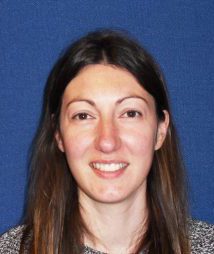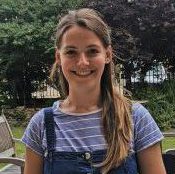THEME II – Biomarkers of exposure, effect and susceptibility to chemical and radiation exposures
Overview
The aim of this Theme is to produce new insights into the molecular effects of exposures to chemicals and radiation that will allow us to (i) identify and validate biomarkers of exposure, early and long-term effects (such as toxicity and carcinogenesis) and susceptibility; (ii) identify potential mechanisms involved; and (iii) improve our understanding of causal pathways to evaluate their subsequent effects on health and ageing.
Using data from existing large and well-established population, patient and occupational cohort studies, as well as de novo collected biosamples, in vitro cell lines and blood samples exposed ex vivo, these studies will apply state-of-the-art 'omics' technologies and develop new statistical approaches to mine these large datasets for biomarkers of chemical and radiation exposures. Further mechanistic investigations will be carried out using causal modelling approaches, as well as cell line experiments.

Theme Leads
Dr Christophe Badie

Theme 2 Co-Lead
UK Health Security Agency
CRTH Projects:
Theme 2 Project 1: Exposure and risk markers in medical uses of IR
Theme 3 Project 1: Mutagenesis and toxicology in 3D cell systems
Research Areas:
I am biologist who carried out my PhD in Radiobiology-Radiopathology at an cancer hospital, the Gustave Roussy institute in Villejuif near Paris which I obtained from the University of Paris XI – Orsay, France). Radiotherapy and many chemotherapeutics rely on DNA double-stranded break (DSB) formation to drive the killing of tumour cells over several cell division cycles but also damaging surrounding normal tissue cells. Using primary cultures of fibroblasts from patients, I worked on inter-individual radiation sensitivity and DSB repair. I identified the first radiotherapy patient whose radiation toxicity was due to a defect in DNA DSB repair which was thought to be almost incompatible with survival at the time; it was found later that the patient had a mutation in ligase IV. After several post-doctorate positions (one on p53 adenovirus and radiotherapy and one cell-cycle arrests following ionising radiation exposure), I became in 2005 the leader of the Cancer Mechanisms and Biomarkers group in the Radiation Effects department at the Centre for Radiation Chemical and Environmental Hazards, of PHE (now UKHSA) near Oxford. More recently, I became interested in cancer genomics and have been associated with an important recent study on mutational signatures of ionizing radiation in second malignancies (Behjati S. et al Nature communications 2016). I have developed a strong interest in the effects of radiation exposure on the immune system as demonstrated by our recent publications on aging of the T-cell receptor repertoire (Candéias SM. et al. Cell Mol Life Sci. 2017) and on inflammatory gene expression following genotoxic cancer therapy (Manning G. et al Front Immunol. 2017) and last but not least, detecting cancers early by tracking and monitoring the progression of initiated, ‘pre-cancerous’ cells (Verbiest T. et al. Leukemia 2018).
I am also very interested in new technical developments to identify sub-populations of blood cells and extracellular vesicles as a source of new biomarkers of radiation exposure, susceptibility and toxicity.
Other roles
I now have an established reputation in the international radiation research field and I am a committee member of the Association for Radiation Research (ARR) and currently its treasurer. I am also a member of the European Radiation Research Society and the Research Orientation of the French Institute of Radioprotection and Nuclear Safety (IRSN) Committee. I have significant involvement in radiation research in Europe MELODI (European Multidisciplinary European Low Dose Risk Research Initiative).
I give lectures at Oxford University for the MSc Radiation Biology of the Department of Oncology on carcinogenesis and individual sensitivity. I am passionate and actively involved in training of the new generation of biologists with expertise in radiation effects and there a currently several MSc and PhD students in the group. I also review for several relevant international journals as well as UK and international funding bodies.
Member of the NATO Research Task Group (RTG) Human Factors and Medicine Panel (HFM) HFM-291: Ionizing Radiation Bioeffects and Countermeasures Member of the scientific council of The International Association of Biological and EPR Radiation Dosimetry (IABERD) is a scientific association, established for the public benefit to advance research, development and education in the biological dosimetry and EPR dosimetry applied to ionizing radiation.
Publications:
Professor Marc Chadeau-Hyam
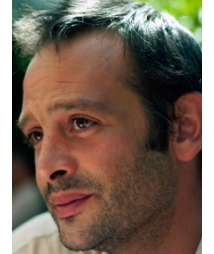
Theme 2 Co-Lead
School of Public Health, Imperial College London
CRTH Projects:
Theme 2 Project 2: Pathways and biomarkers of mixtures of chemical exposures
Theme 4 Project 3: Detection of HTAs in water
Publications:
Theme II Projects
Project outline: This project will study in vitro, and in vivo biomarkers of ionising radiation relevant to healthcare (e.g. CT scans, radiotherapy and man-made radioactive isotopes). Studies will be undertaken to characterise biomarkers in the context of radiotherapy patients (in collaboration with the Institute for Cancer Research), vascular operators, nuclear medicine patients and practitioners using human cell model systems and a range of therapeutic and diagnostic radionuclides and radiopharmaceuticals to develop new treatment protocols with lower toxicity. Ultimately, this knowledge will be used to support health decisions by the public and policy-makers and will allow individual differences in sensitivity to be considered to better protect those at higher risk by regularly monitoring them, to decrease the risk and intervene to treat cancer earlier.
Overall objectives: We will develop and validate novel biomarkers of radiation exposure, effect and susceptibility, notably exploiting existing cytogenetics techniques and developing markers such as expression of splice variants, microRNAs, RNA modification and mitochondrial DNA mutations. These and other markers will be applied to samples obtained from practitioners delivering X-ray guided endovascular procedures and their patients. This will contribute to a better understanding of the radiation doses delivered to specific tissues such as bone marrow and blood following radioactive isotopes injected for nuclear medicine purposes. We will evaluate DNA damage and activated pathways associated with low dose exposures from an intracellular radiation source in vivo. We aim to assess multiple existing and new sensitive biomarkers for reliable estimation of the low doses delivered internally in vitro and in vivo by radionuclides, respectively to blood and bone marrow, to develop calibration curves to compare external X-ray doses and internal exposure.
Project outline: This project aims at developing statistical approaches to analyse mixtures of chemical exposures and their biological response and ultimately to identify biomarkers of these complex exposures. The project comprises a strong methodological component focusing on the development and the application of novel statistical models and machine learning algorithms accommodating multiple and interacting compounds. The project will be based on the re-analysis of existing data as proof-of-principle and the resulting approach will be used for the analysis of new data to identify validated biomarkers of exposure mixtures.
Overall objectives: The main objectives are two-fold (i) to identify from existing data the biological imprint of chemical mixtures using exposure to chlorination by-products as an exemplar; (ii) to investigate the molecular signatures associated with these complex exposures. Adopting a xenobiotic approach, we will use clustering algorithms to define co-occurring sets of exposures and/or markers of exposure. Resulting cluster memberships will be used as a proxy to define discrete (multiple) exposure profiles. Their interpretation will rely on regression models or classification approaches quantifying the factors (and/or individual exposures) driving the cluster membership. To explore the internal response to these exposures we will perform (multi) omic profiling using penalised regression and Partial Least Square models and will visualise complex correlation patterns across omic signals and/or exposures via network inference.
Project outline: The urgent need for affordable and social housing in the UK has driven the exploitation of ex-brownfield sites. This has resulted in considerable public concern, but to date there is limited data on the likely residual chemical exposures of populations at these locations. These issues are compounded by the fact that many of the developments are in inner city areas with high air pollution levels. In this project we aim to address this knowledge gap by monitoring a broad range of pollutants at selected brownfield sites where there is significant or planned housing development. This surveillance work will be complemented by personal monitoring of populations living at varying distance from these locations using novel passive absorption badges to capture exposures to volatile organic compounds (VOC) and semi-volatile organic compounds (SVOC), with a focus on vulnerable groups: pregnant mothers, children and aged-individuals with chronic disease.
Overall objectives: We will conduct residential, ambient and personal VOC and SVOC exposure assessments of populations at ex-brownfields sites, beginning with residential developments built on ex-gas works (identified as an area of public concern through PCIEP activities), before expanding consideration to other types of brownfield sites. We will explore the feasibility of examining internal biomarkers of exposure and response in vulnerable populations living at these locations. This project will complement the activities outlined in T3:P3, as well as providing samples relevant to the activities outlined in T4:P3.
Project outline: This project will analyse questionnaire and biomarker data collected from women in the Breast Milk, Environment, and Early-life Development (BEED) study and follow up neurodevelopmental outcomes in their children. The BEED study was set up around 3 municipal waste incinerators (MWIs) across England and includes ~600 women and approximately ~1500 breast milk samples. The number of MWIs in the UK has increased due to EU restrictions on landfill, but there is ongoing public concern about the possible health effects of MWIs and resistance to their construction. BEED has gathered personal exposure profiles using biomarkers in breast milk, including persistent organic pollutants such as polychlorinated dibenzodioxins, polychlorinated dibenzofurans, dioxin-like polychlorinated biphenyls (PCBs), heavy metals, brominated flame retardants. The breast milk metabolome has also been analysed using liquid chromatography-mass spectrometry (LC-MS).
Overall objectives: The main objectives are: (i) to analyse a large range of breast milk biomarker data to determine background population levels of these environmental chemicals; (ii) to investigate personal exposure levels to these environmental chemicals in relation to both distance and particulate matter exposures from an MWI; (iii) to investigate personal exposure levels to these environmental chemicals in relation to pregnancy, lifestyle and dietary questionnaire data.
Theme II Investigators
Dr Paul O’Mahoney

UK Health Security Agency
CRTH Projects:
Theme 1 Project 4: Potential effects of sunlight on cardiometabolic health
Paul is an engineer/physicist specialising in the interactions of light and living matter. He is leading the Optical Radiation Effects Group at the UKHSA, continuing the work of uncovering the interactions between light and life, and how these might impact human health.
Alongside extensive work on light dosimetry and safety, he is involved in clinical work, including clinical trials, and working with patients on designing research, treatments and after-care. He has also worked in instrumentation development, designing and validating devices for use in research or clinical practice. Most notably I led a British Skin Foundation funded project to develop an LED-based device for clinical phototesting.
His research group at the UKHSA is concerned with studying the effects of optical radiation on human health. This includes the beneficial and detrimental effects of natural daylight and artificial light sources, from the ultraviolet (UV) through the visible light spectrum to near-infrared (N-IR).
Professor Paul Elliott

HPRU Director
School of Public Health, Imperial College London
CRTH Projects:
Theme 1 Project 1: Nuclear installations and childhood cancer
Theme 1 Project 3: Health risks associated with mobile phones and police radios
Theme 2 Project 2: Pathways and biomarkers of mixtures of chemical exposures
Theme 2 Project 4: Biomarkers of early-life exposures and neurodevelopmental outcomes
Theme 3 Project 3: Chemical exposures and health effects near selected brownfield sites
Publications:
Dr Christophe Badie

Theme 2 Co-Lead
UK Health Security Agency
CRTH Projects:
Theme 2 Project 1: Exposure and risk markers in medical uses of IR
Theme 3 Project 1: Mutagenesis and toxicology in 3D cell systems
Research Areas:
I am biologist who carried out my PhD in Radiobiology-Radiopathology at an cancer hospital, the Gustave Roussy institute in Villejuif near Paris which I obtained from the University of Paris XI – Orsay, France). Radiotherapy and many chemotherapeutics rely on DNA double-stranded break (DSB) formation to drive the killing of tumour cells over several cell division cycles but also damaging surrounding normal tissue cells. Using primary cultures of fibroblasts from patients, I worked on inter-individual radiation sensitivity and DSB repair. I identified the first radiotherapy patient whose radiation toxicity was due to a defect in DNA DSB repair which was thought to be almost incompatible with survival at the time; it was found later that the patient had a mutation in ligase IV. After several post-doctorate positions (one on p53 adenovirus and radiotherapy and one cell-cycle arrests following ionising radiation exposure), I became in 2005 the leader of the Cancer Mechanisms and Biomarkers group in the Radiation Effects department at the Centre for Radiation Chemical and Environmental Hazards, of PHE (now UKHSA) near Oxford. More recently, I became interested in cancer genomics and have been associated with an important recent study on mutational signatures of ionizing radiation in second malignancies (Behjati S. et al Nature communications 2016). I have developed a strong interest in the effects of radiation exposure on the immune system as demonstrated by our recent publications on aging of the T-cell receptor repertoire (Candéias SM. et al. Cell Mol Life Sci. 2017) and on inflammatory gene expression following genotoxic cancer therapy (Manning G. et al Front Immunol. 2017) and last but not least, detecting cancers early by tracking and monitoring the progression of initiated, ‘pre-cancerous’ cells (Verbiest T. et al. Leukemia 2018).
I am also very interested in new technical developments to identify sub-populations of blood cells and extracellular vesicles as a source of new biomarkers of radiation exposure, susceptibility and toxicity.
Other roles
I now have an established reputation in the international radiation research field and I am a committee member of the Association for Radiation Research (ARR) and currently its treasurer. I am also a member of the European Radiation Research Society and the Research Orientation of the French Institute of Radioprotection and Nuclear Safety (IRSN) Committee. I have significant involvement in radiation research in Europe MELODI (European Multidisciplinary European Low Dose Risk Research Initiative).
I give lectures at Oxford University for the MSc Radiation Biology of the Department of Oncology on carcinogenesis and individual sensitivity. I am passionate and actively involved in training of the new generation of biologists with expertise in radiation effects and there a currently several MSc and PhD students in the group. I also review for several relevant international journals as well as UK and international funding bodies.
Member of the NATO Research Task Group (RTG) Human Factors and Medicine Panel (HFM) HFM-291: Ionizing Radiation Bioeffects and Countermeasures Member of the scientific council of The International Association of Biological and EPR Radiation Dosimetry (IABERD) is a scientific association, established for the public benefit to advance research, development and education in the biological dosimetry and EPR dosimetry applied to ionizing radiation.
Publications:
Dr Stephen Barnard

Investigator
UK Health Security Agency
CRTH Projects:
Theme 2 Project 1: Exposure and risk markers in medical uses of IR
Theme 3 Project 2: Occupational exposure to ionising radiation
Research Areas:
Stephen is currently working at UKHSA in the Radiation Effects department of the Centre for Radiation, Chemical and Emergency Response (CRCE). In his research area, he develops techniques in biological dosimetry (dicentric, micronuclei and FISH translocations) with a particular focus on implementing and improving the gamma-H2AX/53BP1 foci assay for rapid/triage dose estimation as well as clinical patient applications. He also has an interest in researching the role of radiation in cataractogenesis and lens epithelial cells, particularly the role of DNA damage/repair and proliferation.
Publications:
Dr Leon Barron

Investigator
Environmental Research Group, School of Public Health, Imperial College London
CRTH Projects:
Theme 2 Project 2: Pathways and biomarkers of mixtures of chemical exposures
Theme 2 Project 3: Biomarkers of potential exposures from brownfield sites
Theme 4 Project 1: Novel screens for environmental neurotoxins
Theme 4 Project 3: Detection of HTAs in water
Publications:
Professor Marc Chadeau-Hyam

Theme 2 Co-Lead
School of Public Health, Imperial College London
CRTH Projects:
Theme 2 Project 2: Pathways and biomarkers of mixtures of chemical exposures
Theme 4 Project 3: Detection of HTAs in water
Publications:
Mr Sibo Cheng

PhD student
School of Public Health, Imperial College London
CRTH Projects:
Theme 2 Project 2: Pathways and biomarkers of mixtures of chemical exposures
Publications:
Dr Sonia Dagnino

Investigator
School of Public Health, Imperial College London
CRTH Projects:
Theme 2 Project 2: Pathways and biomarkers of mixtures of chemical exposures
Publications:
Dr Bethan Davies

Investigator
School of Public Health, Imperial College London
CRTH Projects:
Theme 1 Project 1: Nuclear installations and childhood cancer
Theme 2 Project 3: Biomarkers of potential exposures from brownfield sites
Theme 3 Project 3: Chemical exposures and health effects near selected brownfield sites
Publications:
Dr Lourdes Cruz Garcia
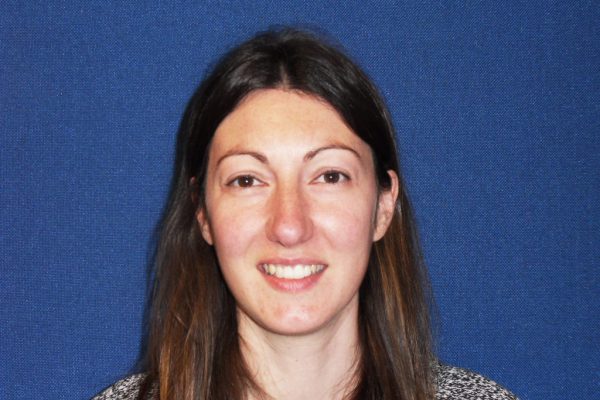
Investigator
UK Health Security Agency
Theme 2 Project 1: Exposure and risk markers in medical uses of IR
Research Areas:
Lourdes is a biologist with a profound background in molecular biology. She started her research career at the University of Barcelona (Spain) where she received her MSc and PhD. After her postdoctoral studies at the University of Utah (USA) and further research work at the University of Portsmouth (UK), she was recruited at PHE’s (now UKHSA) CRCE in Cancer mechanism and biomarkers group as a Scientist.
As a Senior Radiation Protection Scientist, Lourdes is involved in projects focused on the role of ionizing radiation in leukemogenesis and the identification of new biomarkers of exposure. She is currently investigating the effect of confounding factors on transcriptional biomarkers, the different response of transcript variants to radiation and the modulation of radiation-induced leukemogenesis by extracellular vesicles.
Lourdes has taken on UKHSA’s research work on multi-institutional European and NIH funded projects focused on the identification of inflammation-associated genes as potential biomarkers of radiation exposure by using high throughput methods for gene expression analysis.
Publications:
Professor Bijan Modarai

Investigator
King’s College London
CRTH Projects:
Theme 2 Project 1: Exposure and risk markers in medical uses of IR
Publications:
Dr Jayne Moquet

Investigator
UK Health Security Agency
CRTH Projects:
Theme 2 Project 1: Exposure and risk markers in medical uses of IR
Theme 3 Project 2: Occupational exposure to ionising radiation
Research Areas:
Jayne is a Ph. D. biology graduate with more than 35 years of experience as a Radiation Protection Scientist at UKHSA’s Centre for Radiation, Chemical and Environmental Effects. As a Principal Radiation Protection Scientist in the Cytogenetics Group, Jayne has co-authored over 90 papers on experimental and medical aspects of radiation cytogenetics and biological dosimetry, using the dicentric, micronucleus, premature chromosome condensation, FISH-translocation and γ-H2AX assays. In particular, Jayne explores the application of biomarker assays for accidental, occupational and medical exposure scenarios. Current work is focused on development of biomarkers for radiotherapy patients.
Publications:
Dr Ian Mudway

Investigator
Environmental Research Group, School of Public Health, Imperial College London
CRTH Projects:
Theme 2 Project 2: Pathways and biomarkers of mixtures of chemical exposures
Theme 2 Project 3: Biomarkers of potential exposures from brownfield sites
Theme 3 Project 3: Chemical exposures and health effects near selected brownfield sites
Theme 3 Project 5: Pesticide toxicity
Publications:
Dr Grainne O’Brien

Investigator
UK Health Security Agency
CRTH Projects:
Theme 2 Project 1: Exposure and risk markers in medical uses of IR
Theme 3 Project 1: Mutagenesis and toxicology in 3D cell systems
Research Areas:
Grainne has been a member of CRCE’s Cancer Mechanisms and Biomarkers group for over 10 years. During that time she has participated in many research projects such as identifying gene expression biomarkers of radiation exposure by nCounter and QPCR technologies and investigating the effect of low doses of radiation on the hematopoietic stem cell populations. Grainne recently obtained her PhD from Brunel University (UK) where she focused on investigating the genetic and epigenetic pathways affected in the development of acute myeloid leukaemia after radiation exposure.
Publications:
Dr Rachel B Smith

Investigator
School of Public Health, Imperial College London
CRTH Projects:
Theme 2 Project 4: Biomarkers of early-life exposures and neurodevelopmental outcomes
Publications:
Dr Mingzhu Sun
Investigator
UK Health Security Agency
CRTH Projects:
Theme 2 Project 1: Exposure and risk markers in medical uses of IR
Theme 3 Project 2: Occupational exposure to ionising radiation
Research Areas:
Mingzhu has a research background in Biomaterials and Tissue Engineering including a number of publications and patents. She also has a wide range of knowledge and hands-on experience in Biomedical Sciences, such as cellular therapy and stem cells. More recently, Mingzhu has become an established radiation scientist of cytogenetic techniques for radiation biodosimetry, particularly application of the cytogenetic dicentric, cytokinesis-block micronucleus and FISH translocation assays for routine and emergency response. Mingzhu has held a number of research grants and is currently contributing to development of the Premature Chromosome Condensation Assay (PCC) within UKHSA and to the NIH CMCR RTGene and NIHR HPRU projects focused on biomarkers of exposure and effect for radiotherapy patients.
Publications:
Dr Samantha Terry

Investigator
King’s College London
Go to external pagePersonal page
CRTH Projects:
Theme 2 Project 1: Exposure and risk markers in medical uses of IR
Publications:
Professor Mireille Toledano

Theme 1 Co-Lead
School of Public Health, Imperial College London
CRTH Projects:
Theme 1 Project 1: Nuclear installations and childhood cancer
Theme 1 Project 3: Health risks associated with mobile phones and police radios
Theme 2 Project 4: Biomarkers of early-life exposures and neurodevelopmental outcomes
Publications:
Professor Paolo Vineis

Investigator
School of Public Health, Imperial College London
CRTH Projects:
Theme 2 Project 2: Pathways and biomarkers of mixtures of chemical exposures
Theme 4 Project 3: Detection of HTAs in water
Publications:
Dr Dragana Vuckovic
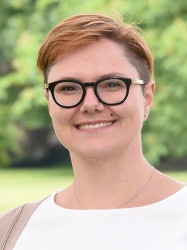
Investigator
School of Public Health, Imperial College London
CRTH Projects:
Theme 2 Project 2: Pathways and biomarkers of mixtures of chemical exposures
Publications:
Tian Yeong
PhD Student
PhD student King’s college London
CRTH Projects:
Theme 2 Project 1: Exposure and risk markers in medical uses of IR
Publications:
Ruthie Parsons
PhD Student
PhD student School of Public Health, Imperial College London
CRTH Projects:
Theme 2 Project 4: Biomarkers of early-life exposures and neurodevelopmental outcomes
Publications:
Ms Holly Walder
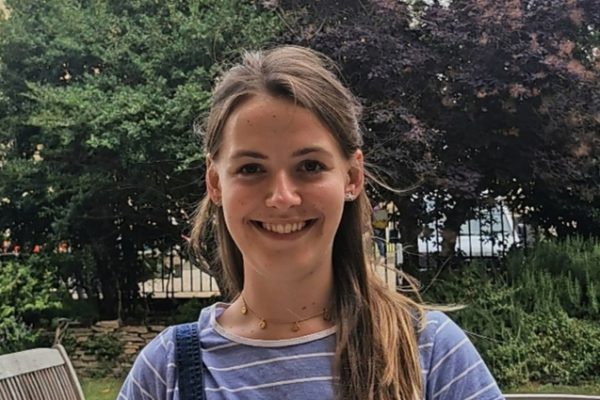
PhD Student
School of Public Health, Imperial College London
CRTH Projects:
Theme 2 Project 3: Biomarkers of potential exposures from brownfield sites
Publications:
Irene Mbutu-Austin
PhD Student
PhD student UKHSA
CRTH Projects:
Theme 2 Project 1: Exposure and risk markers in medical uses of IR
Publications:
Dr Stephanie Wright

Investigator
Environmental Research Group, School of Public Health, Imperial College London
CRTH Projects:
Theme 2 Project 3: Biomarkers of potential exposures from brownfield sites

